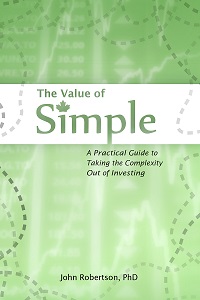Ridiculous Article on EVs
January 12th, 2012 by PotatoNetbug sends along this opinion piece on electric cars after discussing it with his family, saying “I’m sure the math is sound, but I think he’s missing the point… Can you refute the article articulately or am I way off base?”
I’ve only read it twice, but I’m sure he’s missing the point. Moreover, I’m not sure the math is sound. He uses a particularly bizarre way of figuring the cost/savings of EVs, and even then gets his figures wrong.
Let’s start with his assumptions about fuel economy for gas cars. Note that he does not spell them out. To maintain consistency, through most of this I’ll be using US units, figures, and data sources.
A CAFE compliant new car will offer an average fuel economy of 33.3 mpg while a CAFE compliant new light truck will offer an average fuel economy of 25.4 mpg.
Well, right off the bat, that’s untrue. CAFE is not a measure of any particular car, it’s a fleet average, and it includes the contribution of electric vehicles and hybrids (plus some voodoo about ethanol credits). Moreover, it uses a modified scale/test procedure: 33 MPG for CAFE terms is more like 25 MPG on the current EPA test, and even lower real-world. Look up the EPA ratings. I picked a Ford Focus (compact car): it’s at 28 MPG combined. Even compact cars aren’t at the numbers he’s using. According to Natural Resources Canada, the average fuel consumption of the current light vehicle fleet is just under 11 L/100km, or 21.8 MPG.
Now, there is room to quibble there: that’s for a range of cars from new to 10+ years old, whereas new cars will be slightly better. Still, your comparison car is not going to be getting 30 MPG, and especially not when you consider that you should be comparing to the city mileage since EVs are for urban settings.
At 30 mpg, the owner of a new light duty vehicle will consume about 420 gallons of gas per year
He didn’t go through his math, but let’s go backwards: 420 gallons * 30 MPG = 12600 miles/year. That’s probably a reasonable figure to use (I’ve seen 15k mi as more common, but that may just be a case of rounding to a prettier number; not sure what the figure is for those with daily driving commutes). At 22 MPG, that’s more like 572 gallons.
Then he goes to another paper, and somehow gets that electrification doubles the cost of the car (from $19k to $39k). That again is a pretty suspect analysis. For instance, a general rule-of-thumb is that the engine & transmission are 20-40% of the value of a car, yet that paper somehow found that the engine & transmission were just 13% of the cost of a gas car. Moreover, we can buy EVs on the market today that do not cost that much — the Nissan Leaf is “only” $35k (USD), the Prius plug-in has a gas engine and a plug-in battery, is larger and nicer than a $19k comparable car, and is only $32k (USD). Indeed, from looking at US manufacturer’s websites, a compact car with automatic transmission is more like $21k than $19k, and that’s still not adjusting for non-driving features.
The ultimate obscenity is that a conversion from gasoline drive to electric drive will not reduce the total amount of energy used in transportation.
This statement is unsupported by the author, and with good reason: it is patently false. Half the reason to go to electrification or hybridization is the efficiency gain: electric motors are just simply more efficient at turning chemical potential energy into kinetic energy than internal combustion engines. Plus, you can shift the source of that energy from oil to natural gas, hydro, or other renewables.
So, if we re-do his analysis with more realistic numbers (all US figures), we have that the incremental cost for an EV ($21k to $35k) is $14k. That’s saving 572 gallons of gas/year, or 14.1 bbl/yr, or 212 bbl/car lifetime. That works out to a cost of $66/bbl. Which is less than the current cost of oil. Now, this is not the method I would have chosen to make a comparison, but even using his analysis the point he’s reaching for isn’t made.
He also forgot a lot of factors that make EVs a better choice.
Direct financial ones like: Less mainenance cost (no oil changes, spark plugs, timing belts, water pumps, brake pads, etc., etc., etc.), lower fueling costs (oil is an expensive and volatile commodity).
Plus, environmental factors like: Less total pollution (even on a 100% coal power source, an EV is arguably cleaner than a conventional car, and most places are only a fraction coal-powered); pollution shifting (no more smog in city centres!); self-reliance (you can make your own electricity if you’re a doomer, whereas refining your own gas is hard; plus, the cars are quiet and good for sneaking up on zombies). And that efficiency gain.
So right now, going with an EV is close to break-even (though maybe just one the far side). You get all the nice stuff on top of that, but it’s also new, unfamiliar technology. That’s why the subsidies come in: to help make it not only better, but cheaper, to get the ball rolling.
I’m sure the author was cautious in his conclusion, pointing out that his back-of-the-envelope paper, pencil, and calculator analysis could have some holes, that it’s a bit of a strange approach to take (cost per barrel of oil offset?) and that EVs might in fact make some sense…
Electric drive proponents are selling a house of cards based on fundamentally flawed assumptions and glittering generalities that have nothing to do with real world economics. Their elegant theories and justifications cannot withstand paper, pencil and a four function calculator. Shiny new electric vehicles from General Motors (GM), Ford (F), Nissan (NSANF.PK), Toyota (TM), Tesla Motors (TSLA) and a host of privately held wannabe’s like Fisker Motors and Koda are doomed to catastrophic failure. Their component suppliers will fare no better.
Oh wow, he really got the whole foot in there, didn’t he.
Now, as usual, I’m not saying that EVs are going to suddenly take the market by storm: there’s a lot of range anxiety to conquer. They’re not suitable for everyone. But no car is. There are about 1.5M families in the GTA alone; of those, about half have 2 or more cars. I’d estimate that something like 15% of those have (or could easily have) one car that is largely used just for commuting within the GTA — in other words, there’s potentially a market for about 100k EVs in the GTA alone. It’s a niche, but a respectably large one; one that’s worth developing. The economic argument may not be a slam-dunk on its own, but it’s a far cry from a house of cards doomed to catastrophic failure.


 Questrade: use QPass 356624159378948
Questrade: use QPass 356624159378948 Passiv is a tool that can connect to your Questrade account and make it easier to track and rebalance your portfolio, including the ability to make one-click trades.
Passiv is a tool that can connect to your Questrade account and make it easier to track and rebalance your portfolio, including the ability to make one-click trades.